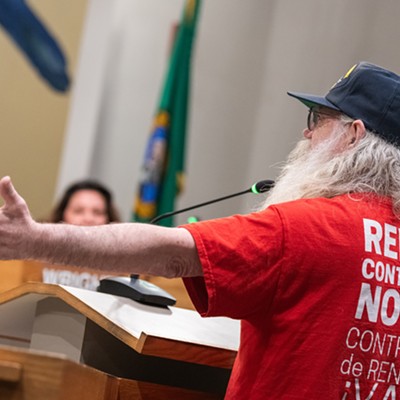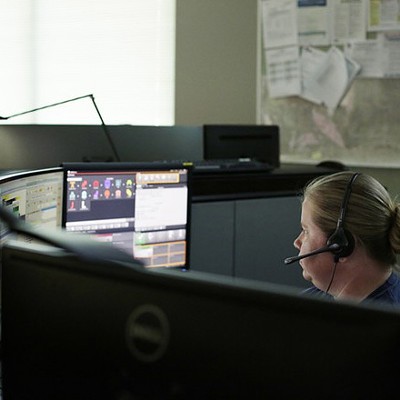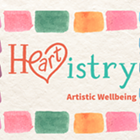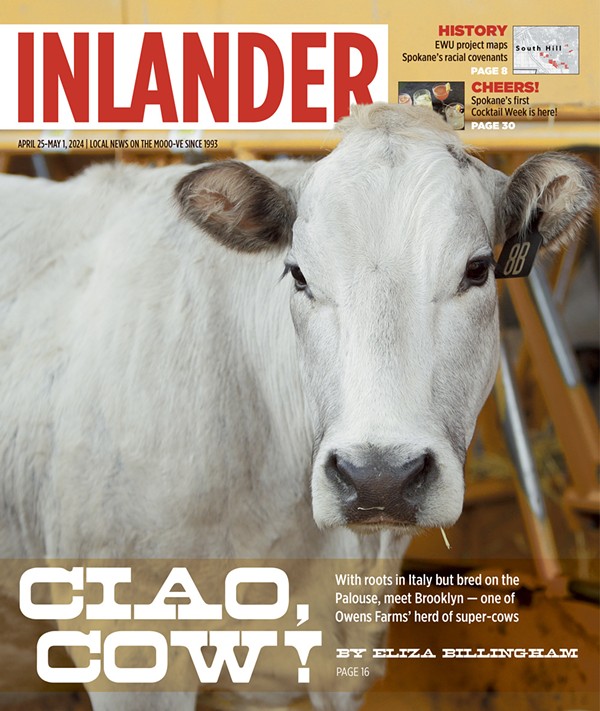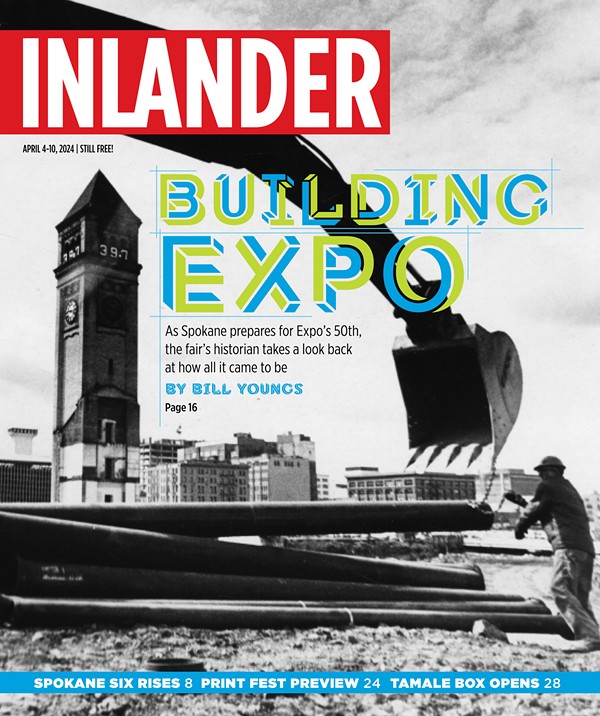Born at the Bray
[
{
"name": "Broadstreet - Instory",
"component": "25846487",
"insertPoint": "4",
"requiredCountToDisplay": "4"
},{
"name": "Broadstreet - Empower Local",
"component": "27852456",
"insertPoint": "8",
"requiredCountToDisplay": "8"
},{
"name": "Broadstreet - Instory",
"component": "25846487",
"insertPoint": "12",
"requiredCountToDisplay": "12"
},{
"name": "Broadstreet - Instory - 728x90 / 970x250",
"component": "27852677",
"insertPoint": "18",
"requiredCountToDisplay": "18"
},{
"name": "Broadstreet - Instory",
"component": "25846487",
"insertPoint": "5th",
"startingPoint": "23",
"requiredCountToDisplay": "24",
"maxInsertions": 100
}
]
by Sheri Boggs
One of the first things you discover in studying contemporary ceramics is that the word pottery has two meanings. Pottery is, of course, the finished vessel -- the satisfying curl of a mug, the limitless possibility of an empty bowl, the blank flat of a tile. But the word pottery also means the place -- the room, the building -- where such things are made. It could be as simple as a small studio with a well-used wheel and a kiln. Or it could be as complex, innovative and rare as the Archie Bray Foundation for the Ceramic Arts in Helena, Mont.
A place that has itself redefined notions of what pottery is -- and, more importantly, can be -- the Archie Bray Foundation celebrates 50 years this summer (June 21-24 is the actual celebration). The erstwhile brick factory is now the site of rustic studio buildings and beehive kilns, an internationally recognized year-round residency program and statuary contributed by five decades of ceramic artists. Furthermore, the foundation has survived as not only a long-term nonprofit, but also as one of the most significant sites of the contemporary ceramics movement.
The Bray's remarkable influence has even drifted in and out of the Inland Northwest, in the shape of many recent gallery shows featuring artists who have worked and studied at the foundation, including Beth Lo, Patti Warashina, Marilyn Lysohir, Mark Digeros and more. Shows at the Lorinda Knight Gallery, SFCC, the Jundt Art Museum and the Northwest Museum of Arts and Culture have all contributed to sharing the remarkable and diverse work born at the Bray. In addition to the numerous gallery showings, one Spokane couple has embraced the influence of the Bray to the point of designing their loft with the care, keeping and showing of their extensive contemporary ceramics collection in mind. Jim Kolva and Pat Sullivan have been collecting ceramics for more than three decades, and their love for the art form traces a direct route back to the Archie Bray Foundation.
"It had this really neat, ramshackle appearance," Kolva recalls of his first chance encounter with the Bray. "There was the old clay factory, the brick stacks, the big beehive kilns, that made up the skyline there. I like old buildings anyway, and something about this place just resonated with me. We'd collected a little bit, mostly functional pots, but to go there and see the different stages from beginning to end, not to mention the variety of ceramics there, was really a thrilling experience."
Kolva conjectures that at least half of his ceramics collection is Archie Bray work, and that even more of it is directly influenced by the Bray if not actually generated there.
"Seeing what was happening at the Bray totally opened a new door for us in terms of the variety available in ceramics," he says. "That's what's so fun about contemporary ceramics -- the tremendous amount of flexibility you have, the amazing color and textural variations you can get with clay, that you just can't with any other medium."
The Bray's significance is felt on not only local, but national and international levels. "In the artists' community, it's very well known, but it's also very well known throughout the world, as well," says Josh DeWeese, resident director of the Archie Bray Foundation and himself an artist. "So many of our residents come from all over, and while it's not easy for them to be here, they come away with a pretty positive experience. Our artists become our best ambassadors."
Archie's place in art history
"What's most significant about the Bray is that it's considered the birthplace of contemporary American ceramics," says artist Robert Harrison, who also serves as president of the board of directors. "In their early 20s, Peter Voulkos and Rudy Autio came to work here, and at the same time it was an interesting period for art in America, abstract expressionism was taking hold. The idea that art could be done in a very expressionistic, non literal way, was really the main thing the Archie Bray was all about -- the genesis where this mode of art flowered and flourished."
The foundation's beginnings were humble, yet far-reaching. Brick manufacturer Archie Bray, a strong patron of the arts, dreamed of an art center at the site of his brick factory just outside of Helena, and in 1951 he built the pottery. With the help of brothers Hank and Peter Meloy, one a respected artist and instructor, the other a prominent attorney who threw pots in his off hours, Bray's wild scheme became a reality.
"It was his project, essentially. [The Meloys] encouraged him and acted as a sort of sounding board, but he was the one who had the resources, he had the place and he had the passion," explains DeWeese.
Bray's dual nature as both a hardworking businessman and a committed arts lover served the fledgling foundation well.
"I never got to meet him, but from the stories I've heard, he was very much a factory manager," DeWeese says. "He'd be out in the brickyard working the men, and he'd have these scruffy, nasty clothes on. He had this skanky felt hat he'd use to grab the bricks out of the kiln, like a glove. But he had this other side to him that was really phenomenal. He had a great love for culture, not just art, but music, dance, theater, all of it."
Autio and Voulkos, two prolific and experimental ceramic artists, came to serve as the foundation's first resident artists. In 1952, an unprecedented workshop with Japanese potter Shoji Hamada, Japanese philosopher Soetsu Yanagi and British potter Bernard Leach put the Archie Bray Foundation firmly on the map of contemporary American art. Their free-and-loose approach to clay unraveled preconceived notions of what contemporary ceramics were, and were not.
"One of the defining factors of the Archie Bray influence on artwork and how it looks is that there isn't any," says DeWeese. "The look of the Archie Bray is whatever is contemporary and current in the field of the ceramic arts. The fact that people can come here and work for two years and then they have to move on means that the place is constantly in flux. And that's good, it keeps things fresh and fluid."
Space to create
While there is no doubt that the Archie Bray Foundation is a crucial fork in the path of contemporary art -- as a place for artists, it has no equal. Robert Harrison first came there as a resident artist the summer of 1982.
"I fell in love with the place and the environment. The grounds have these wonderful old buildings, and it seems like, with all the artists who have come before, that history is just oozing out of the bricks. There's a sense of being connected somehow to the essence of the place, and there's a sense that all around you is sacred, fertile ground," says Harrison.
The alchemy between place and artist extends among the gathered artists themselves.
"I've heard it described that within pottery, in the ceramics community in general, there exists a family context," he says. "It's an affinity that just doesn't happen in other art mediums. And within that context there's the Archie Bray Foundation, and there's a bond that exists through the place, like a secret fraternity, perhaps."
Artists at the Bray find not only time and space to work, but also a built-in community of like-minded folk.
"It's amazing the kind of resources that are available just in terms of having access to someone who's been through the same things," says DeWeese. "You can ask someone else, 'How do I apply for this grant,' 'How do I do this interview,' or 'Why is my pot cracking?' "
Although Kolva has only thrown a pot once, he is not immune to the magical properties of a residency at the Bray.
"With the reputation and location that it has, it creates this special place where a potter can be part of a continuum of artists," he says. "It doesn't always work, sometimes that synergy just isn't there for a variety of reasons. But other times, it is, and when that happens, it's an amazing thing. They work shoulder to shoulder, these artists -- and they party hard."
Many artists stay after their time at the Bray is finished, finding homes and work in Helena. The foundation also offers classes in pottery and the ceramic arts for the general public. "You have some of the premier ceramic artists in the world living part of the time, if not all of the time, right here in Helena. It's a catalytic place," says Harrison. "Almost all the residents talk about their time here as a special place in their career. Things came together here, and often, they base their life's work on what they began at the Bray."
Honoring the legacy, looking to the future
While many of the 50th-anniversary festivities at the Bray are already sold out, a number of area museums, including the Holter Museum in Helena, and the Bray Gallery at the Foundation, offer retrospective exhibits open to the public. In fact, the Holter Museum has arranged a touring exhibit of Bray works, set to hit the road in August, after its current run in Helena. The exhibit won't make it to Spokane until early summer of 2004, but the University of Washington has just published A Ceramic Continuum: Fifty Years of the Archie Bray Influence, a handsome coffee table book on the foundation, which also serves as the official catalog of the touring show.
Future plans for the Bray include further development of the studio facilities and finding new ways to ease the financial strain of residency.
"We're on solid ground now, but we're planning amazing things for the future," says Harrison.
Most importantly, the Bray will continue its mission of redefining ceramics while showing the vast potential inherent in a simple handful of clay.
"We hope to continue to open people's eyes up to what's possible in ceramics," says DeWeese. "In the grand scheme of things, it's such a tiny little thing, but also has such potential for greatness. Pottery is such a great art form because pots are such a part of everybody's life. You drink your coffee from a cup, you eat from a dinner plate and you can be having an incredible, aesthetic experience almost without realizing it." F
"A Ceramic Continuum: 50 Years of the Archie Bray Influence" runs at the Holter Museum of Art, 12 E. Lawrence, Helena, Mont., from June 15 through July 31. Exhibitions by Bray residents, community classes and visiting artists take place at the Archie Bray Foundation, 2915 Country Club Ave., Helena, Mont., June 21-24 in celebration of the Bray's 50 years.
Call: (406) 443-3502 or visit the Web site for more information, www.archiebray.org.
One of the first things you discover in studying contemporary ceramics is that the word pottery has two meanings. Pottery is, of course, the finished vessel -- the satisfying curl of a mug, the limitless possibility of an empty bowl, the blank flat of a tile. But the word pottery also means the place -- the room, the building -- where such things are made. It could be as simple as a small studio with a well-used wheel and a kiln. Or it could be as complex, innovative and rare as the Archie Bray Foundation for the Ceramic Arts in Helena, Mont.
A place that has itself redefined notions of what pottery is -- and, more importantly, can be -- the Archie Bray Foundation celebrates 50 years this summer (June 21-24 is the actual celebration). The erstwhile brick factory is now the site of rustic studio buildings and beehive kilns, an internationally recognized year-round residency program and statuary contributed by five decades of ceramic artists. Furthermore, the foundation has survived as not only a long-term nonprofit, but also as one of the most significant sites of the contemporary ceramics movement.
The Bray's remarkable influence has even drifted in and out of the Inland Northwest, in the shape of many recent gallery shows featuring artists who have worked and studied at the foundation, including Beth Lo, Patti Warashina, Marilyn Lysohir, Mark Digeros and more. Shows at the Lorinda Knight Gallery, SFCC, the Jundt Art Museum and the Northwest Museum of Arts and Culture have all contributed to sharing the remarkable and diverse work born at the Bray. In addition to the numerous gallery showings, one Spokane couple has embraced the influence of the Bray to the point of designing their loft with the care, keeping and showing of their extensive contemporary ceramics collection in mind. Jim Kolva and Pat Sullivan have been collecting ceramics for more than three decades, and their love for the art form traces a direct route back to the Archie Bray Foundation.
"It had this really neat, ramshackle appearance," Kolva recalls of his first chance encounter with the Bray. "There was the old clay factory, the brick stacks, the big beehive kilns, that made up the skyline there. I like old buildings anyway, and something about this place just resonated with me. We'd collected a little bit, mostly functional pots, but to go there and see the different stages from beginning to end, not to mention the variety of ceramics there, was really a thrilling experience."
Kolva conjectures that at least half of his ceramics collection is Archie Bray work, and that even more of it is directly influenced by the Bray if not actually generated there.
"Seeing what was happening at the Bray totally opened a new door for us in terms of the variety available in ceramics," he says. "That's what's so fun about contemporary ceramics -- the tremendous amount of flexibility you have, the amazing color and textural variations you can get with clay, that you just can't with any other medium."
The Bray's significance is felt on not only local, but national and international levels. "In the artists' community, it's very well known, but it's also very well known throughout the world, as well," says Josh DeWeese, resident director of the Archie Bray Foundation and himself an artist. "So many of our residents come from all over, and while it's not easy for them to be here, they come away with a pretty positive experience. Our artists become our best ambassadors."
Archie's place in art history
"What's most significant about the Bray is that it's considered the birthplace of contemporary American ceramics," says artist Robert Harrison, who also serves as president of the board of directors. "In their early 20s, Peter Voulkos and Rudy Autio came to work here, and at the same time it was an interesting period for art in America, abstract expressionism was taking hold. The idea that art could be done in a very expressionistic, non literal way, was really the main thing the Archie Bray was all about -- the genesis where this mode of art flowered and flourished."
The foundation's beginnings were humble, yet far-reaching. Brick manufacturer Archie Bray, a strong patron of the arts, dreamed of an art center at the site of his brick factory just outside of Helena, and in 1951 he built the pottery. With the help of brothers Hank and Peter Meloy, one a respected artist and instructor, the other a prominent attorney who threw pots in his off hours, Bray's wild scheme became a reality.
"It was his project, essentially. [The Meloys] encouraged him and acted as a sort of sounding board, but he was the one who had the resources, he had the place and he had the passion," explains DeWeese.
Bray's dual nature as both a hardworking businessman and a committed arts lover served the fledgling foundation well.
"I never got to meet him, but from the stories I've heard, he was very much a factory manager," DeWeese says. "He'd be out in the brickyard working the men, and he'd have these scruffy, nasty clothes on. He had this skanky felt hat he'd use to grab the bricks out of the kiln, like a glove. But he had this other side to him that was really phenomenal. He had a great love for culture, not just art, but music, dance, theater, all of it."
Autio and Voulkos, two prolific and experimental ceramic artists, came to serve as the foundation's first resident artists. In 1952, an unprecedented workshop with Japanese potter Shoji Hamada, Japanese philosopher Soetsu Yanagi and British potter Bernard Leach put the Archie Bray Foundation firmly on the map of contemporary American art. Their free-and-loose approach to clay unraveled preconceived notions of what contemporary ceramics were, and were not.
"One of the defining factors of the Archie Bray influence on artwork and how it looks is that there isn't any," says DeWeese. "The look of the Archie Bray is whatever is contemporary and current in the field of the ceramic arts. The fact that people can come here and work for two years and then they have to move on means that the place is constantly in flux. And that's good, it keeps things fresh and fluid."
Space to create
While there is no doubt that the Archie Bray Foundation is a crucial fork in the path of contemporary art -- as a place for artists, it has no equal. Robert Harrison first came there as a resident artist the summer of 1982.
"I fell in love with the place and the environment. The grounds have these wonderful old buildings, and it seems like, with all the artists who have come before, that history is just oozing out of the bricks. There's a sense of being connected somehow to the essence of the place, and there's a sense that all around you is sacred, fertile ground," says Harrison.
The alchemy between place and artist extends among the gathered artists themselves.
"I've heard it described that within pottery, in the ceramics community in general, there exists a family context," he says. "It's an affinity that just doesn't happen in other art mediums. And within that context there's the Archie Bray Foundation, and there's a bond that exists through the place, like a secret fraternity, perhaps."
Artists at the Bray find not only time and space to work, but also a built-in community of like-minded folk.
"It's amazing the kind of resources that are available just in terms of having access to someone who's been through the same things," says DeWeese. "You can ask someone else, 'How do I apply for this grant,' 'How do I do this interview,' or 'Why is my pot cracking?' "
Although Kolva has only thrown a pot once, he is not immune to the magical properties of a residency at the Bray.
"With the reputation and location that it has, it creates this special place where a potter can be part of a continuum of artists," he says. "It doesn't always work, sometimes that synergy just isn't there for a variety of reasons. But other times, it is, and when that happens, it's an amazing thing. They work shoulder to shoulder, these artists -- and they party hard."
Many artists stay after their time at the Bray is finished, finding homes and work in Helena. The foundation also offers classes in pottery and the ceramic arts for the general public. "You have some of the premier ceramic artists in the world living part of the time, if not all of the time, right here in Helena. It's a catalytic place," says Harrison. "Almost all the residents talk about their time here as a special place in their career. Things came together here, and often, they base their life's work on what they began at the Bray."
Honoring the legacy, looking to the future
While many of the 50th-anniversary festivities at the Bray are already sold out, a number of area museums, including the Holter Museum in Helena, and the Bray Gallery at the Foundation, offer retrospective exhibits open to the public. In fact, the Holter Museum has arranged a touring exhibit of Bray works, set to hit the road in August, after its current run in Helena. The exhibit won't make it to Spokane until early summer of 2004, but the University of Washington has just published A Ceramic Continuum: Fifty Years of the Archie Bray Influence, a handsome coffee table book on the foundation, which also serves as the official catalog of the touring show.
Future plans for the Bray include further development of the studio facilities and finding new ways to ease the financial strain of residency.
"We're on solid ground now, but we're planning amazing things for the future," says Harrison.
Most importantly, the Bray will continue its mission of redefining ceramics while showing the vast potential inherent in a simple handful of clay.
"We hope to continue to open people's eyes up to what's possible in ceramics," says DeWeese. "In the grand scheme of things, it's such a tiny little thing, but also has such potential for greatness. Pottery is such a great art form because pots are such a part of everybody's life. You drink your coffee from a cup, you eat from a dinner plate and you can be having an incredible, aesthetic experience almost without realizing it." F
"A Ceramic Continuum: 50 Years of the Archie Bray Influence" runs at the Holter Museum of Art, 12 E. Lawrence, Helena, Mont., from June 15 through July 31. Exhibitions by Bray residents, community classes and visiting artists take place at the Archie Bray Foundation, 2915 Country Club Ave., Helena, Mont., June 21-24 in celebration of the Bray's 50 years.
Call: (406) 443-3502 or visit the Web site for more information, www.archiebray.org.



